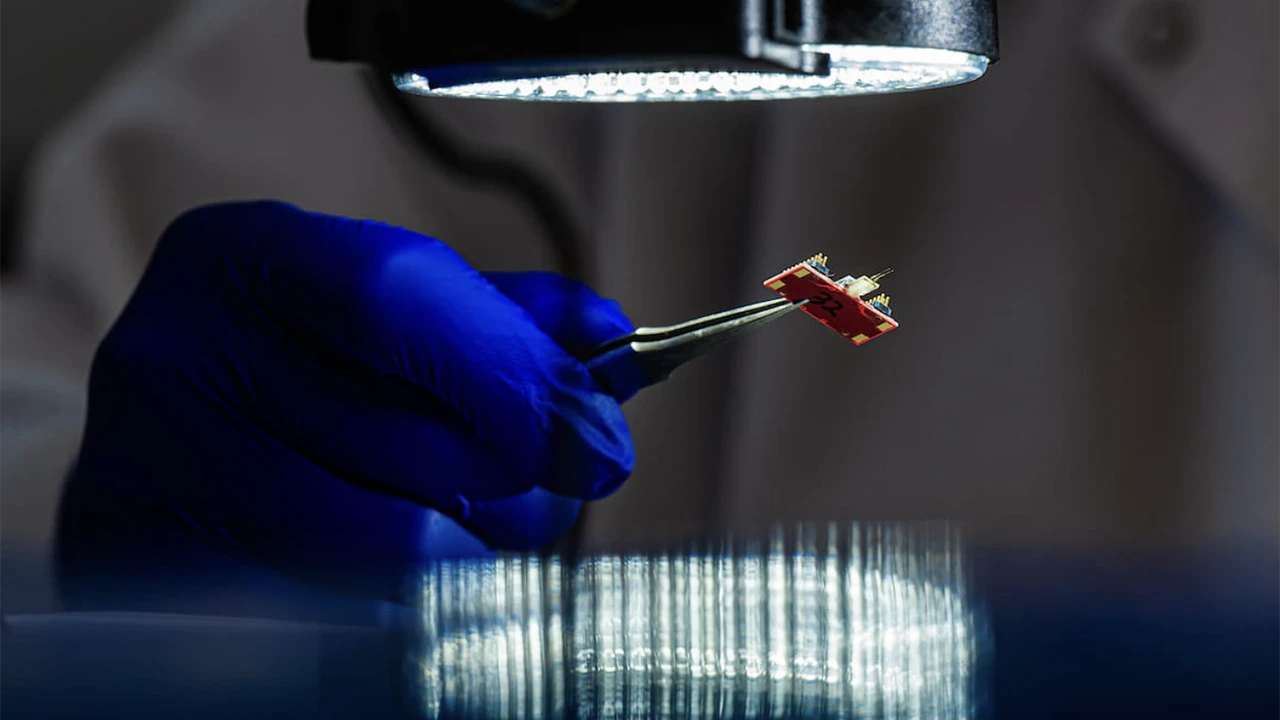
Photo by Jeff Fitlow for Rice University
Flexible Electrodes Allow Recording of Spinal Activity During Movement
This week, Cell Reports published a study on a new technology for recording the activity of neurons in the spinal cord of mice during movement. This technology, called a spinalNET, is a flexible electrode that can be implanted in the mouse’s spine. Because the spinalNET is flexible, it can move with the spinal cord during movement. This allows researchers to record neural activity in freely behaving animals.
Traditionally, studying the activity of spinal cord neurons has been difficult because the spinal cord moves during movement. Existing techniques based on implanted rigid sensors either damage the spinal cord or cannot capture the activity of individual neurons during movement.
“Up until now, the spinal cord has been more or less a black box […] The issue is that the spinal cord moves so much during normal activity. Every time you turn your head or bend over, spinal neurons are also moving.” Said, Lan Luan, a corresponding author on the study and an associate professor of electrical and computer engineering.
To solve this issue, the research team at Rice University, led by Yu Wu, developed the spinalNET. The electrodes in this method are over a hundred times thinner than a human hair and are almost as soft and flexible as the neural tissue itself. Because of this, they can move with the spinal cord during movement.
With spinalNET, researchers were able to record neuronal activity in the spinal cord for prolonged periods and with great resolution, even tracking the same neuron over multiple days.
This technology has the potential to significantly improve our understanding of how the spinal cord controls movement. By studying the activity of spinal cord neurons during natural behaviors, researchers can gain insights into how these neurons work together to generate coordinated movements. This knowledge could lead to the development of new treatments for spinal cord injuries and diseases that impair movement.
“Being able to extract such knowledge is a first but important step to develop cures for millions of people suffering from spinal cord diseases,” said Yu Wu on Rice University News.
The researchers also acknowledge some current limitations of spinalNet. For instance, the number of neurons that can be recorded is limited by the number of electrodes. Additionally, the recordings can degrade over time.
Future studies should focus on improving the long-term stability of the recordings and increasing the number of recording channels.


 Previous Story
Previous Story

 Latest articles
Latest articles 

Leave a Comment
Cancel